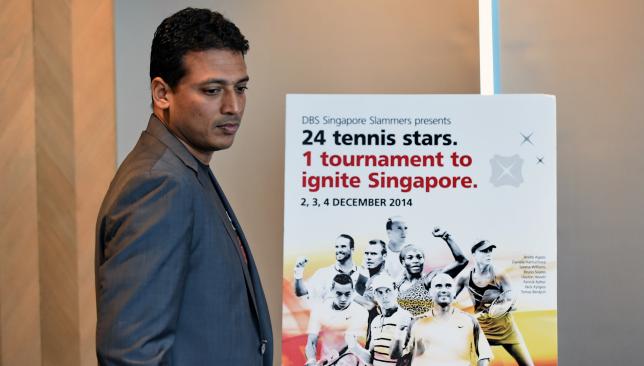
Few things have created more debate in tennis this season than the International Premier Tennis League (IPTL), the product of Indian doubles sensation Mahesh Bhupathi.
– #Quiz360: WIN a six-month Target Gym membership
Promoted from the start as a “revolutionary” concept that formed franchise teams representing cities across Asia, the IPTL aims to fill a gap in the Asian market, in locations that don’t necessarily get to see live professional tennis.
Its format is tailored for TV, making sure matches start at specific times no matter what, and don’t last for hours and hours at the risk of losing viewers and live spectators. It also adds an entertainment element; cheerleaders, music, lights – what the league CEO Morgan Menahem had previously told me was meant to create an NBA-like atmosphere.
The plans were very ambitious from the start and even when A-listers like Rafael Nadal (whose media manager Benito Perez-Barbadillo is involved in the league), Novak Djokovic, Andy Murray, Andre Agassi and Serena Williams endorsed the idea, the scepticism remained amongst the masses, who first questioned whether Bhupathi (pictured) & Co. could pull it off and later doubted the league’s traction with the public, considering the drastic changes in the game rules.
But how can something that puts the likes of Roger Federer and Pete Sampras on one team, or get Maria Sharapova and Murray to share a doubles court not become a hit?
How can a rematch of a 1998 US Open final between Pat Rafter and Mark Philippoussis not at least grant some credibility to what appears to have been a highly successful event thus far. At least that’s how it appeared on TV over the past three legs.
The stadiums appeared full, the players were making things competitive and we got to see some tennis superstars give an unbridled showcase of their supernatural skills (that Federer overhead winner against Djokovic is not something you see every day, or year).
It not only gave the players a chance to be part of a team, it allowed them to compete but much more freely because millions of dollars, grand slam titles or ranking points are not on the line.
People are describing the IPTL as a glorified exhibition but the players involved insist their competitive instincts were revealed from the very first day. Pete Sampras admitted he felt a lot of pressure having his entire team and the team owner sat on the bench while he lost to Philippoussis in Delhi.
But being competitive does not mean this league can suddenly change tennis the way we know it.
The sport is as traditional as any can get – with a generally traditional following – and implying it can take away from the professional tour is both hasty and unnecessary. It’s not even what the organisers set out to do.
Its placement in the tennis offseason was both logical and controversial. The players who often complain about the length and intensity of the tour were now replacing some valuable rest time with this four-legged league.

But most of the top stars only committed to two or three nights. They’re also only playing one or two sets in a shortened format.
The travel between cities is definitely an unwarranted effort but the way they’ve been reacting through their social media accounts is making it seem like it’s been worth their while.
The question of sustainability is unavoidable. Will the team owners who have invested millions want to come back? Have the TV rights generated good revenues? Will the top stars continue to take part? Those are questions that only time will answer.
Bhupathi says several cities have already showed interest in forming new franchises.
The immediate concern right now is to get Dubai to live up to the extravaganza that preceded it. The Hamdan Sports Complex is a huge venue that has struggled to draw crowds in the past due to its remote location. But it also has never hosted a tennis event with an elite line-up.
The UAE crowd have embraced both official and exhibition tournaments in Dubai and Abu Dhabi and it will be a real shame if the people don’t show up in scores this weekend.